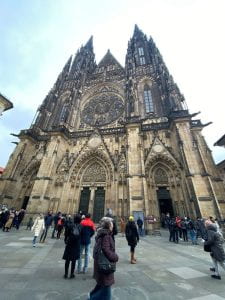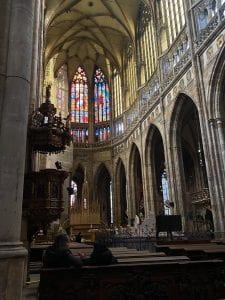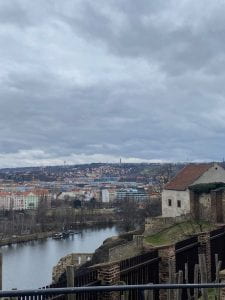Midterms mark a sort of a halfway point for my time in Berlin. Here I am in the midst of taking exams and writing papers so evidently, there is no better time to write about my time here.
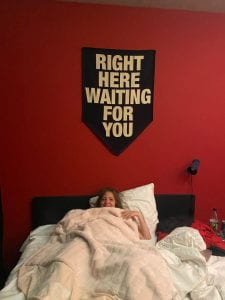









You know the question “use one word to describe (yourself, how you feel, insert name of place, name of person, etc),” well if I were asked this question in regard to Berlin I would say “I feel conflicted.” I am totally conflicted. I think my varying opinion comes from the fact that I measure it on whether or not I could live here or live somewhere like here. Maybe this is an odd way to look at things, but every day, I find myself considering this question. When I first got here, there was very little time to think. The week of orientation was constant and in the time we had outside of scheduled activities people in the dorm did stuff together. After five days of doing this, I got sick or just exhausted. Being sick in another country that doesn’t sell medicine at regular stores, with no close friends, was definitely far from ideal. For a few days, I felt all the symptoms of sickness, but worst of all, I felt very alone…However, it did give me a few days to rest and reflect on exactly how I want to spend my time here. From my four-day sickness, I learned:
- Although I love people, engaging 24/7 takes everything out of me. I love spending time by myself and walking around aimlessly.
- Museums are cool, however, there are other things I prefer doing and seeing. I definitely still enjoy going to museums but no more than in a day.
- It is ok to say no to events and activities that you do not want to do.
- Abandoned berlin (the Website) is so so cool
RANDOM THINGS I think about
- One thing that I both love and hate about Berlin is its size (geographically). It is huge and because of this, I know that I will never have enough time to explore all of it. Here, there is no excuse for being bored because there is always something to do. In Walla Walla and even Portland at times the lack of obvious fun things to do forces me to use creativity. During the first week of class, we read Georg Simmel’s “The Metropolis and Mental Life” which analyzes the differences in life between rural and urban settings. In the city, there is a constant simulation, to avoid exhaustion (or to simply exist) individuals develop a “blasé outlook.” People cultivate a sort of indifference in order to protect themselves from urban fatigue. At home, I feel like I feel more inclined to interact with what I come across, possibly because I am not in a constant state of encountering unknown things. Here, I simply cannot be impressed or even pay attention to all that is around me. The constant unfamiliarity seems to quench some of my creative energy allowing me to no longer feel the need to create my own fun. I miss coming up with odd things to fill my time and yet I love the fact that I am constantly surrounded by different things that I can engage with and look into.


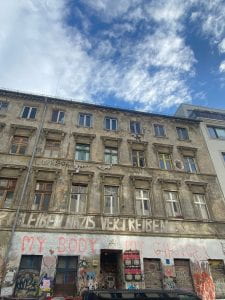


- I love the public transportation system. The second week I was here I met up with someone who moved here a year and 3 months ago from Turkey (who I now regularly hang out with). He promised me a tour of the Technological Universities Library, but after walking around it for 15 minutes he admitted they didn’t know what to do next. Having had no chance to really explore Berlin on my own I admitted to not knowing any specific things we could do and suggested we come up with a random number, get on the Sbahn, and ride the random number of stops we had chosen. Without much time we did not ride the S Bahn that far, but I continued to hop on the S and ride it to random places to explore the expansive city.
- The grocery stores are pretty GREAT because they are affordable. Compared to the US nothing is sold in bulk (except potatoes, carrots, and onions). I am someone who enjoys walking and so I don’t mind taking multiple trips to the store per week. I just wish I had packed a larger shopping bag to carry stuff home. But I can buy a week’s worth of groceries for like 30 euro so I would say that is pretty great. (If you visit, make sure you bag your groceries quickly).
- The thrifting here is horrible because everything is so expensive, but there are great flea markets on Sundays (not mauer park but everything else).
- THE DONER! I would have to say that doner is my new favorite food. I have tried it at a few different locations, however so far the best I’ve had is in the train station right next to my house.
- I have always loved abandoned places. I like the idea of imagining what something once was, walking around something that is “forgotten”, something that has been discarded. In more rural areas, you often have to travel to get to these places, however, in Berlin, they are everywhere. There is such a striking contrast about seeing something abandoned next to things that are newly built and modern. Now many of these places are in the process of restoration or being knocked down. I think it is extremely unfortunate when buildings get torn down, so I have been glad to see that many places in Berlin are being refurbished. Tempelhof was once an airport and is now a large park with a community garden and some food stands and the abandoned Spree Park is in the process of being reopened as a park as well. Around three weeks ago I visited one of the first Prussian hospitals, its ceiling was caving in and graffiti was all over its walls. This building lies outside of central Berlin and is surrounded by fencing. It would probably be dangerous to reopen it for large groups of people to look at the graffiti on the interior, however, I wonder if parts of it could be restored or if soon it will be knocked down.




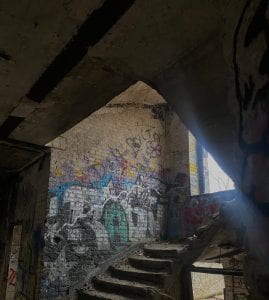





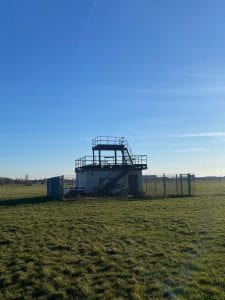



7. When I first went to techno, I could feel a part of myself worrying about how tired I would feel the next day. Staying out till early in the morning really ruins most of the next day for you. Since my first few experiences going out, my opinion has improved. Letting go of how I may feel the next day and allowing myself to really sleep in makes the night worth it….Also hard, fast techno is the best.
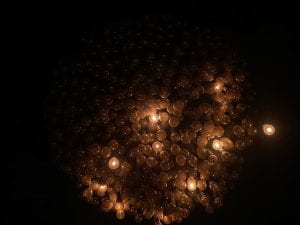
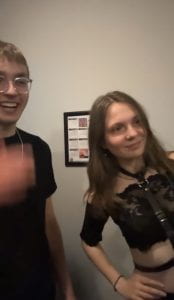
8. If I leave the building I’m in and walk five steps I can easily hop on the Ubahn or the S Bahn. I am very thankful to live in this central location that allows me to easily get around. However, I do live in one of the ugliest neighborhoods, which I did not know when I first arrived (so I assumed that all of Berlin looked like where I live). I have since found many neighborhoods and places that I enjoy, but if I am trying to quickly switch locations I ride ten minutes to Kreuzberg. This part of town is filled with wonderful cafes, thrift shops, and unique restaurants. One of my favorite bars is called the multilayerladen, its design is unique, people sit on swings and climb up ladders to get seating.
9. The libraries here are beautiful, but always extremely full. Inside, there could easily be more seating and more tables but for some reason, it seems they opt for a more laid-out appearance over the ability to seat as many people as possible.
10. I still miss nature, however as it begins to warm up (finally) I have begun to appreciate the parks (although there are still no leaves on the trees


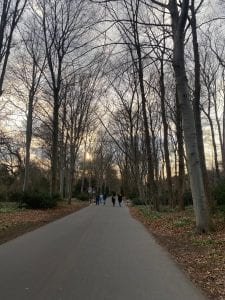

11. I miss sticks of gum wrapped in paper and stars at night
12. I wish that I had continued taking German because although basically everyone here speaks English I think speaking the language would open up possibilities for true connection.
13. It is so great that travel is so cheap, I wish it could be like this in the US.
14. Why is water not free? I already forget to drink, but now I spend the entire day without it if I forget it. Also, I find it interesting that people buy water in bottles instead of getting it from their sinks.
15. People should be required to learn another language in the US.
As of today, I do not believe that I would want to live here more permanently but it’s unbelievable that I get to spend 2 more months here. (abrupt ending but I don’t feel like writing more).







 near EBA15
near EBA15


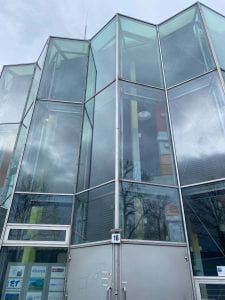
 We are doing tech-buildings
We are doing tech-buildings

 The cool buildings in Adlershof
The cool buildings in Adlershof (cold and unhappy)
(cold and unhappy)




